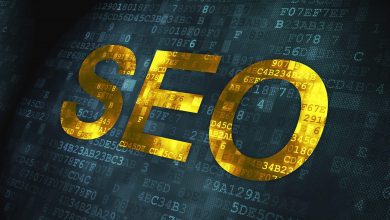
A website page speed refers to the time it takes for web pages or media content to be downloaded from website hosting servers and shown on the requesting web browser. The time it takes for the requesting browser to show the entire content of a web page after clicking on it is referred to as page load time.
Every page element affects page speed, including HTML code, CSS that styles page elements, multiple JavaScript files, photos, videos, and other multimedia. Everything from the size of an element to the web server’s speed on which it is stored impacts the page speed.
The performance of a website can influence its search engine rankings. For example, Google prioritizes delivering relevant information to users as quickly as possible. Site performance is important in Google search rankings.
Focusing on page speed optimization from the ground up is the key to enhancing website performance. However, web developers and online business owners frequently disregard page load speeds in their website creation and design methods.
Factors that Affects Website Speed
According to Google, more than half of your visitors will abandon your site if it takes longer than 3 seconds to load. This is why it’s critical to understand what factors influence the page load time of your website.
Web hosting
The web hosting company you choose and the server it utilizes to store your website can significantly impact page speed. Always keep in mind that no one enjoys waiting for a webpage to load fully.
Always select a host and a plan that are appropriate for your website’s needs. Websites with large databases, for example, may not operate as effectively on shared hosting. When comparing hosting, some of the performance factors to consider are:
- Server Response Time: Look for independent data on Time to First Byte (TTFB), which measures how quickly a server responds to a request.
- Equipment: Solid State Drives (SSDs) are significantly faster than mechanical drives.
- Accounts Per Server: If you’re using shared hosting, an overburdened server can cause performance issues.
File types and sizes
The larger your file sizes and the more files you have, the longer it will take for your page to load. While faster connection speeds have allowed larger files to be loaded in less time, it’s still vital to optimize your files as much as possible. To keep your files as little as possible, minify your code and optimize graphic formats and sizes.
Heavy Use of CSS and JavaScript
CSS and JavaScript files, which add functionality and styling to your site’s front end, are the most common causes of slowness. This is significantly relevant when it comes to content that is displayed above the fold. The most effective method is to place the tracking code and scripts below the fold. This will avoid slowing down your website with First Content Paint (FCP) or First Meaningful Paint (FMP) of Google PageSpeed Insights.
Content Distribution Network
A content delivery/distribution network (CDN) is a network that delivers and distributes content. It is a global network of proxy servers and data centers designed to improve the performance and availability of services for end-users. Using CDN and other suitable tools/software will effectively speed up your website.
Bad Coding
Not every website developer is capable of writing code that is both efficient and effective. Some create websites with large pieces of code that only serve small purposes. As a result, websites are poorly coded and load slowly. Remove unnecessary parts from your code, such as excess spaces, line breaks, and other formatting data that aren’t essential to complete the job.
Hotlinking
When you use hotlinking, you’re displaying photos from a different server on your website. So someone might, for example, use the URL of one of your photographs to show it on their website.
Why is site speed important?
Conversion rate
Several studies have shown that site speed affects conversion rates. Fast-loading sites not only keep users, but they also convert at higher rates than slower-loading sites. A reduction in page load time of a few milliseconds has been reported to enhance conversions by several companies:
- Mobify discovered that reducing the load time of their homepage by 100 milliseconds resulted in a 1.11% increase in session-based conversions.
- After decreasing page load time in half, retailer AutoAnything saw a 12-13% increase in sales.
- Walmart noticed that reducing the time it took for a page to load by one-second increased conversions by 2%.
Bounce rate
The bounce rate refers to the percentage of visitors who leave a website after just seeing one page. If a page fails not to load within a few seconds, users are likely to close the window or click away.
SEO best practices
Site performance is a significant component in Google search rankings because Google prioritizes getting relevant information to consumers as quickly as possible. For SEO, a website’s performance on mobile devices is also an essential factor to consider.
User experience
A negative user experience is created by long page load times and slow response times to user actions. As a result, users may feel frustrated while waiting for content to load, leading them to leave the site or application.




